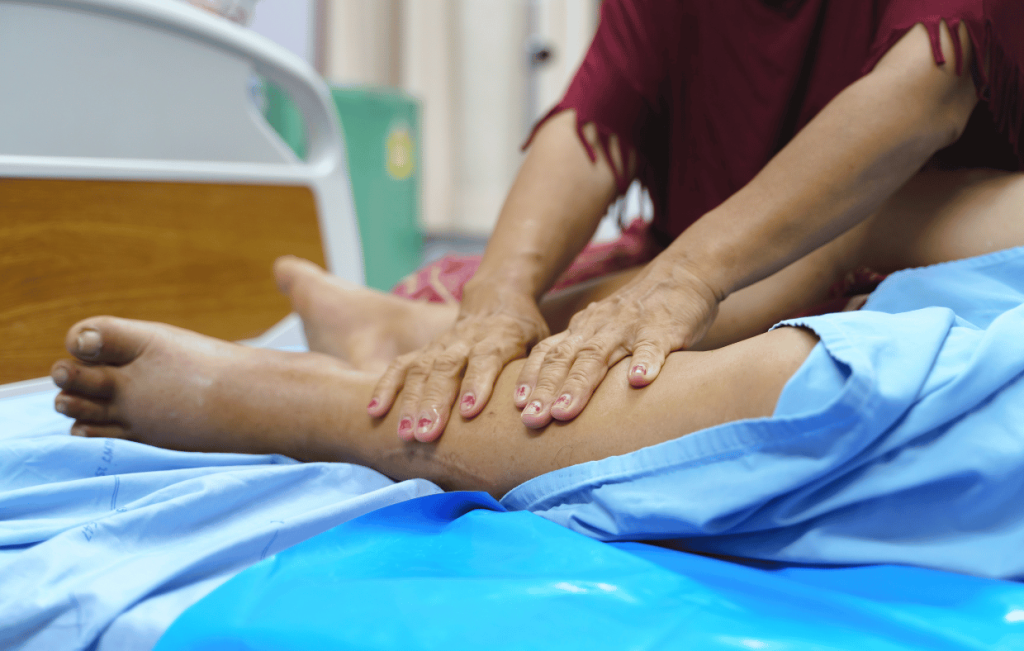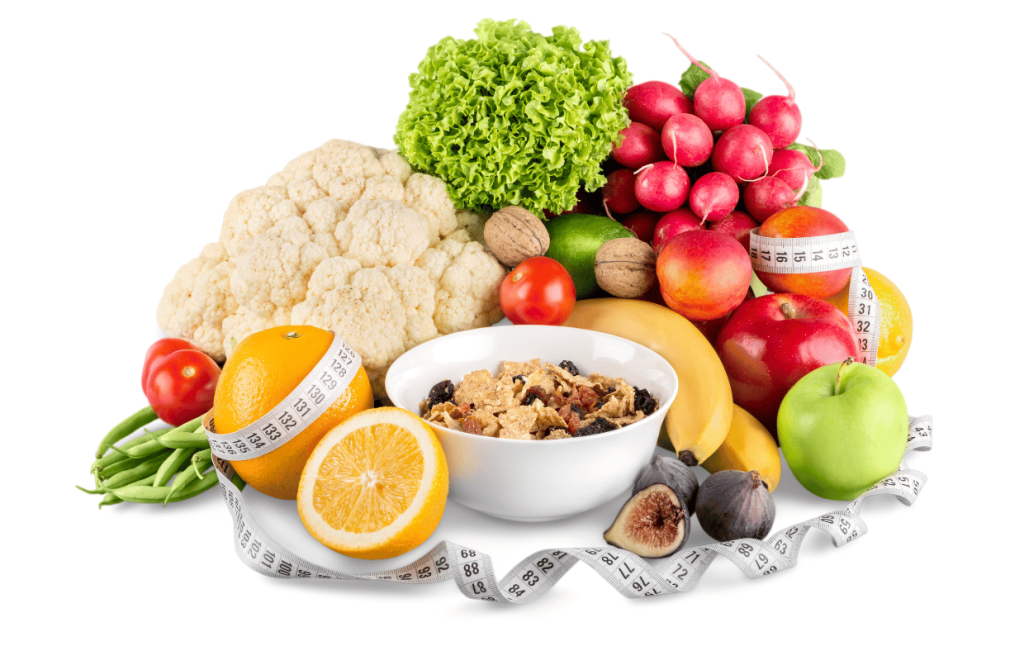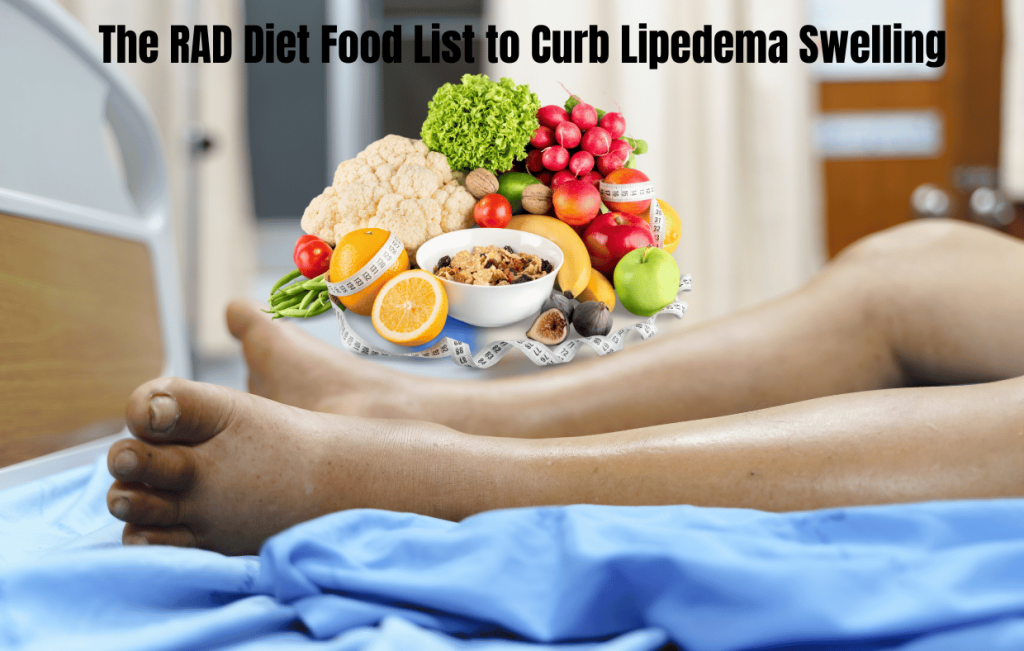Lipedema, a Rare Adipose Disorder (RAD), is a chronic condition characterized by abnormal fat accumulation, primarily in the legs, thighs, buttocks, and sometimes arms. Often misdiagnosed, lipedema affects millions of women worldwide, causing pain, swelling, easy bruising, and resistance to traditional weight loss methods.
Diet is crucial for lipedema patients in managing the condition, reducing chronic inflammation, and minimizing fat accumulation.
While no single food plan can cure lipedema, experts recommend a RAD Diet—an approach combining anti-inflammatory, keto, low-carb, and elimination diet principles—to help control symptoms and improve overall health. This ideal RAD Diet food list curbs lipedema swelling, reduces leg pain, and supports long-term wellness.
Here’s a simple, natural trick that turbocharges calorie burning 3X faster – without diets or exercise. See it here >>> Mitolyn discovery
Understanding Lipedema and Its Symptoms

Before delving into the RAD diet, it’s essential to recognize lipedema symptoms. This disorder, often confused with obesity or lymphedema, is a distinct condition. Common symptoms include:
- Disproportionate fat accumulation in the lower body
- Leg edema that worsens throughout the day
- Sensitivity to touch or pressure
- Pain reduction only through specific interventions
- Chronic lymphedema in later stages
- Edema without a clear cause
- Resistance to diet and exercise for fat loss
These symptoms can significantly impact daily life and emotional well-being. Early intervention with proper dietary support and medical care is crucial.
Why Diet Matters for Lipedema Patients

Lipedema experts, including Dr. Wright, emphasize the importance of nutrition in managing lipedema swelling. While surgical treatments like liposuction may be necessary, lifestyle changes, including diet, offer patients a way to reduce symptoms naturally and avoid complications.
The main dietary goals for a lipedema-friendly RAD diet are to:
- Reduce cellular inflammation
- Stabilize blood sugar
- Minimize simple carbohydrates
- Avoid inflammatory fatty acids
- Lower leg volume and circumference
- Prevent progression to secondary lymphedema
- Support healthy, sustainable weight loss
Components of the RAD Diet
Let’s break down the key elements of the RAD Diet food list, drawing from multiple anti-inflammatory principles.
1. Anti-inflammatory Foods
Inflammation is a key factor in lipedema; addressing it through diet is crucial. The RAD diet emphasizes anti-inflammatory foods, many found in the Mediterranean diet. Focus on:
- Colorful foods like berries, leafy greens, and cruciferous vegetables
- Fatty fish rich in omega-3s (salmon and sardines)
- Olive oil, avocados, and nuts
- Green tea and herbal teas (especially turmeric or ginger-based)
These foods help fight cellular inflammation and reduce flare-ups and painful swelling.
2. Low-Carb & Keto Elements
The RAD diet incorporates keto and low-carb principles to limit carbohydrate intake and stabilize blood sugar. High blood sugar is linked to increased lipedema fat accumulation and worsened inflammation. Instead of refined carbs, choose:
- Non-starchy vegetables (cauliflower, spinach, zucchini)
- Lean proteins (chicken, turkey, eggs)
- Low-sugar fruits (berries)
- Whole grains in moderation (quinoa, buckwheat)
Avoid high-glycemic foods like white bread, white rice, and sugary snacks. Use the glycemic index as a tool to make better carb choices.
3. Elimination of Triggers
The RAD diet includes elimination strategies to identify and remove foods that may cause inflammation or discomfort. Common triggers include:
- Gluten
- Dairy
- Soy
- Refined sugar
- Processed meats
- Certain oils (soybean and corn oil)
Start by removing all potential irritants and reintroducing them one at a time while tracking lipedema symptoms.
4. Trace Elements and Supplements
Lipedema patients often lack certain trace elements that support lymphatic and immune health. Beneficial nutrients include:
- Magnesium
- Zinc
- Sodium selenite (a form of selenium)
- Vitamin D3
- Omega-3 supplements
Consult your healthcare provider before starting supplements, especially if you’re undergoing other treatments or have underlying conditions.
5. Diosmin for Circulation Support
Research is exploring the effectiveness of Diosmin—a plant-based flavonoid—for venous and lymphatic health. Clinical trials show promise in using Diosmin to:
- Reduce leg pain
- Promote venous ulcer healing
- Support lymphatic drainage
- Reduce leg edema
It may be used alongside physical therapies to optimize outcomes.
RAD Diet Food List
Here’s a sample food list under the RAD Diet framework, highlighting ideal choices for each category:
Proteins:
- Grass-fed beef
- Pasture-raised chicken
- Wild-caught salmon
- Sardines
- Cage-free eggs
- Bone broth
- Lentils (in moderation)
Vegetables (Low-carb & colorful):
- Kale, spinach, arugula
- Broccoli, cauliflower, cabbage
- Carrots, beets, bell peppers
- Zucchini, cucumber
- Asparagus, green beans
Fruits (Low glycemic index):
- Blueberries
- Raspberries
- Strawberries
- Blackberries
- Lemons and limes
Fats:
- Extra virgin olive oil
- Coconut oil (in moderation)
- Avocados
- Chia seeds
- Flaxseeds
- Walnuts, almonds
Grains (Low GI & gluten-free):
- Quinoa
- Buckwheat
- Millet
- Wild rice
- Steel-cut oats (if tolerated)
Herbs, Spices & Beverages:
- Turmeric
- Ginger
- Garlic
- Green tea
- Dandelion root tea
- Lemon water
These choices help maintain good health, manage weight, and reduce inflammation.
Foods to Avoid on the RAD Diet
To achieve the best results for lipedema, avoid foods that worsen chronic inflammation, cause blood sugar spikes, or interfere with lymphatic function:
- White bread and pasta
- Sugary beverages and desserts
- Fast food and fried food
- High-sodium processed meats
- Artificial sweeteners and preservatives
- Alcohol (especially beer and sweet wines)
- Simple carbohydrates like pastries and cakes
Even small amounts of these foods can trigger flares in sensitive individuals, so vigilance is important.
Lifestyle Pairings With the RAD Diet
While the RAD diet is foundational, it works best when paired with other interventions. Physical decongestive therapy, manual lymphatic drainage, and gentle exercises (like swimming, walking, or yoga) can enhance its effectiveness.
Compression garments and leg elevation may also help control leg circumference and discomfort.
Personalizing the RAD Diet for Your Body
Every person’s body responds differently. Working with a nutritionist or lipedema expert can help tailor the RAD Diet to your specific needs. For example:
- If you have insulin resistance, a stricter keto diet may be advised.
- If you’re dealing with food sensitivities, an extended elimination diet phase may be useful.
- If you’re showing signs of secondary lymphedema, dietary interventions might need to be paired with medical treatments.
The key is to listen to your body, monitor lipedema symptoms, and adjust accordingly.
Success Stories & Ongoing Research
Many women who’ve adopted the RAD Diet report reduced swelling and pain, better energy, improved mobility, and enhanced mental health. Although more research is needed, clinicians at the Cleveland Clinic and worldwide are increasingly incorporating dietary approaches as part of an integrative treatment model.
Recent studies also explore the role of genetic testing, gut microbiome balance, and lymphatic support supplements in the future of lipedema care.
Final Thoughts: Give Yourself the Best Chance
While there’s no one-size-fits-all approach, the RAD Diet food list offers lipedema patients a science-backed, holistic way to reduce swelling and improve their quality of life.
Whether newly diagnosed or living with the condition for years, incorporating anti-inflammatory, low-glycemic foods and eliminating known triggers can provide the best chance at relief.
As Dr. Wright and many others emphasize, lipedema is real—and with knowledge, support, and the right food choices, you can take control of your symptoms and feel empowered in your healing journey.
In this video, the scientist reveals exactly how to do this one quick exploit before going to bed. Try It!
Bonus: Sample RAD Diet Daily Meal Plan
Breakfast:
- Scrambled eggs with spinach and avocado, green tea
Snack:
- Handful of walnuts and blueberries
Lunch:
- Grilled chicken salad with olive oil dressing, cucumber, tomatoes, and kale
Snack:
- Chia seed pudding with coconut milk
Dinner:
- Baked salmon with roasted broccoli and cauliflower rice
Beverage:
- Dandelion tea or lemon water throughout the day


